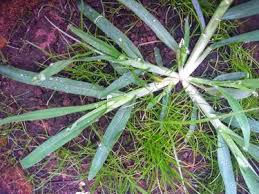What are "weed-free" standards set by the State Of Utah for Sod Quality
- Kirk Harris
- Dec 30, 2024
- 3 min read
Updated: Mar 12
In Utah, sod labeled as "weed-free" must adhere to stringent standards set by the Utah Crop Improvement Association (UCIA). These standards ensure that the sod is cultivated using high-quality, certified seed with minimal weed and other crop seed content.
Key Standards for Certified Sod in Utah:
Seed Purity and Viability:
Kentucky Bluegrass:
Minimum purity: 97%
Minimum viability (germination rate): 80%
Maximum other crop seed: 0.1%
Maximum weed seed: 0.02%
Red Fescue and Chewings Fescue:
Minimum purity: 98%
Minimum viability: 90%
Maximum other crop seed: 0.1%
Maximum weed seed: 0.02%
Tall Fescue:
Minimum purity: 98.5%
Minimum viability: 80%
Maximum other crop seed: 0.1%
Maximum weed seed: 0.02%
What are "weed-free" standards set by the State Of Utah for Sod Quality

What are "weed-free" standards set by the State Of Utah for Sod Quality
Freedom from Specific Weeds:
Certified sod must be free from noxious weeds such as dock, chickweed, crabgrass, plantain, black medic, annual bluegrass, velvet grass, and other specified undesirable species.
Field Inspections:
Fields designated for sod production undergo rigorous inspections to confirm the absence of noxious weeds and other contaminants.
These comprehensive standards ensure that certified sod in Utah is of the highest quality, providing homeowners and landscapers with a reliable, weed-free product for immediate lawn establishment.
In the context of Utah sod standards, "weed-free" refers to the absence of growing weed plants and seeds from noxious weeds in the sod at the time of harvest. However, it does not guarantee that the soil beneath the sod is completely free of dormant or residual weed seeds. State Of Utah Department of Agriculture
Key Points:
Weed-Free Growing Conditions: Certified sod is grown in conditions where noxious weeds are absent. This means there are no visible weeds or growing plants in the sod.
Seed Purity Standards: The seed used to grow the sod meets strict purity requirements, minimizing the presence of weed seeds in the grass itself.
Residual Weed Seeds in Soil: While the sod is inspected to ensure it is free of weed seeds at harvest, the soil beneath the sod may still contain dormant weed seeds. These seeds can potentially germinate later, especially if the soil is disturbed or if environmental conditions favor their growth.

Practical Implications:
Sod grown to Utah's "weed-free" standards ensures a clean, 100% weed-free appearance of noxious weeds at installation. While total elimination of appearance of non noxious weeds may be impossible limited visibility of non noxious weeds may be present, but homeowners must still take proactive steps to prevent weeds from germinating later or continuing to grow. Proper watering, fertilization, and maintenance are essential to keep the lawn healthy and minimize weed growth from potential dormant seeds in the soil.
Application of preemergent to keep dormant weeds seeds from germinating is recommended especially for Crab Grass, Water Grass, or Barnyard Grass varieties that tend to germinate quickly after installation of sod on newly disturbed soil areas in new landscapes. The hot months of late June through late August are prime conditions for These dormant grasses to begin growing. Preemergent applied to new sod installed during these months are highly recommended.
Note
These grasses are annuals and thought they are extremely aggressive and ugly in a new landscape will die after the first killing frost of the season, and can be controlled with applications of preemergent herbicides each spring and summer.





Commenti